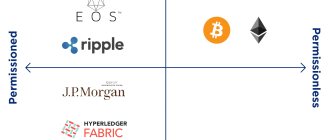The final agreement based on trust, achieved in the process of approvals, is a progressive modern paradigm. When making decisions of various kinds in a group or community, there is a call for consensus - a less formalized process than in democratic voting. It can be stated that voluntary agreements on issues requiring resolution occur on the basis of the general consent of all participants in the procedure...
VKontakte Facebook Twitter Google+ My world
Semantics of the word “consensus”
The theoretical definition of what consensus is has the same meaning - unanimous agreement in the absence of objections - as do voting procedures. The term “consensus” is of Latin origin – consensus, and means “unanimity”. Presumably, the meaning of this political, sociological and legal term lies deeper and means “unity of feelings.”
Important! The word "consensus" only acquires semantic meaning when combined with other words, such as "reach consensus."
Decisions are made in many religious and voluntary public organizations by the method of unanimity. The discussion and information gathering stage of reaching a good-natured agreement is the main goal in this situation. In some archaic communities, the principle of general complacency still applies at meetings of all group members, and a problematic issue is brought up in the voting procedure (a common democratic practice) in exceptional cases.
Wise national traditions, matured as a result of historical evolution, require partnerships in resolving controversial issues.
A visual concept of the word “consensus”
Legal meaning of consensus
The consensus method is used in legal practice at the stage of pre-trial dispute resolution , resolving alternative contradictions in conflict resolution. Legal consensus allows for a neutral (tacit) position on the topic under discussion. A radical principle in achieving consensus is the absence of a negative opinion from one of the parties to the procedure that contradicts the achievement of the desired compromise.
In legal conflictology, the method of settlement agreement is actively used in civil and civil procedural law. Contractual legal relations allow the option of ending the dispute by an amicable agreement between the parties who have the legal right to do so. Resolution and prevention of social and labor conflicts are often implemented by consensus. To reach a consensus means to voluntarily and finally agree or reconcile at the preliminary pre-trial stage.
The legislation does not require a mandatory reconciliation procedure, considering it as a mutually beneficial preliminary discussion in determining alternative indicators.
Data Consistency
Let's start with consistency or coherence. This is the logical consistency of the stored data.
For example, if Alice's parent is Bob, and Bob's parent is Alice, then this is clearly some kind of mess. They cannot be each other's parents at the same time. The data is not consistent!
Consistency is often confused with consensus. Especially when the data is partly stored on one server and partly on another, but must be consistent with each other. However, the consensus is a little different...
Putting Consensus into Practice
In a real situation, coming to a consensus means recognizing the fact of a mutual agreement that suits all parties to business negotiations.
Voluntary agreement to settle relationships in various official situations that have a political or social status is also recognized as an agreement of the parties. In situations of domestic conflicts and disagreements, this term is not used - in these cases, “peaceful agreements” are used to sort things out.
Political agreement
What political consensus is can be heard in television news broadcasts and information programs. At international conferences, the wording of the final resolutions is stated as a coincidence of the positions of the parties to the conflict. General consensus is reasonable agreements to resolve contradictions on controversial issues in a confidential manner.
Public organizations and political associations can strive for consensus, which affirms the fact of friendly agreement - a rather abstract concept. In reference literature and Wikipedia it is indicated that this term denotes a political mechanism for achieving official business and public goals, based on respect for the rights and values of the participants in the process. Voluntary agreements (coincidence of opinions, ideas and positions) are regulated by modern general democratic rules and humanitarian achievements.
Read also: International law: initialing a contract - what is it.
Political Consensus
Tolerance for division
A distinctive feature of a source of truth is its ability to guarantee consensus. However, all participants must have constant access to this source. Which is generally impossible in distributed systems, where the connection between participants may be temporarily lost.
This is the fundamental dilemma between consensus and availability, also known as the CAP theorem. If we choose consensus, then participants who do not have access to the source of truth will not be able to change any data. If they are allowed to change the data, then we automatically get a situation with multiple sources of truth that may contradict each other.
And, as they say, “Can’t win? Lead! So let's look at how we can live without competition for a single source of truth.
Tolerant principle of consensus
The key principle of the consensus method is to achieve a reasonable collegial agreement to end the conflict, relieve tension and achieve equilibrium in the social system (group).
In establishing a formal social contract, the following functional obligations and rules play a major role:
- voluntary participation in the discussion of proposals,
- absence of objections expressed (even by one participant),
- coincidence of interests of group members,
- recognition of the execution of the final agreement.
The decisions of the Security Council of the United Nations are based on the principles of international standards for achieving compromise.
This is interesting! Dispositive and imperative norms of law are: what applies to them
Distributed System Global Time
We have already mentioned the offer number. Each proposal (proposal) has a number. In Lamport's description, this natural number is such that:
- the number is unique, each offer has its own;
- The proposer uses a larger number for each subsequent proposal.
The following analogy helped me in understanding the algorithm: a number is essentially a timestamp of a sentence; together the timestamps define the global synthetic time of a distributed system, designed so that a) no two sentences can be issued at the same point in time , b) it is possible to understand which of the two sentences was made “later”.
The receiver, having accepted an offer, will ignore offers that were made “before” the accepted one (offers “from the past”). In practice, the offer number will consist of a pair: the value of the offer counter of a specific server and the server identifier.
Features of the Consensus Algorithm
The way to reach agreement on complex issues that cannot be resolved in a linear manner comes down to the following points:
- Friendly search and transformation of the interests of the parties to similar indicators.
- The voluntary desire of the participants (each person) to strive for a final or long-term solution to the dispute.
- Availability of time to search and generate alternative proposals.
The unique difference between consensus and compromise is that the agreement process is based on finding a convergence of interests between the parties in a friendly and respectful atmosphere.
Consensus is based on finding a coincidence of interests
Pessimistic blocking
The idea of pessimistic locking is simple: first the participant locks the resource, then performs an update, after which the resource is unlocked. That is if he was lucky enough to come first. If he comes, and the resource is already locked by someone, then he sits, does nothing, and waits for it to be unlocked.
This is the simplest and most reliable approach. However, it has performance issues. Either because of constant waiting, or because of idle locking, which is not at all free.
Consensus structure
The standard procedure for forming a settlement agreement or formal contract includes the following steps.
- Notifying participants about the date and agenda of the meeting.
- Presenting and explaining the issue at hand to the group.
- Description of additional information and possible prospects.
- Joint generation of ideas and proposals that solve a current controversial issue.
- Reviews.
- Comments on the practical implementation and monitoring of the implementation of the final agreement.
- Call for a general vote of authorized members of the working group.
- If there is a blockage, the reasons are determined.
- The date for the next meeting is set.
The contractual procedure involves intermediaries, stenographers and timekeepers who accompany all successive stages of the agreement. A person striving for a peaceful resolution of the issue is a civilized partner who observes formal mutually beneficial agreements.
This is interesting! What are the contents of the most important features of a rule of law state?
Competition for the source of truth
Let's take a closer look at the competition for the source of truth. This could be a master replica of a DBMS, an oracle in distributed systems, the main thread of an application, or simply a shared area of memory.
Everyone can read from the source at the same time. But when trying to record, a participant may be blocked, allowing more successful neighbors to go ahead.
Here we can distinguish two types of blocking: pessimistic and optimistic.
In databases, these are pessimistic and optimistic transactions, respectively. In distributed systems, these are master-slave replication and two-phase commits. And in multithreading these are mutexes and lock-free algorithms.
Methodological functions of consensus
The agreement of the parties is theoretically aimed at resolving contradictions or conflicts, to relieve tension in society or a small group.
It is believed that the standard procedure takes into account the position of both the majority and the minority on the identified contradictions. Decent respect for the values, ideals, positions and behavior of the parties contributes to the generation of a balanced solution. Reaching consensus is required to minimize losses and maximize benefits for all parties in the group. A tolerant procedure is possible in conditions of a highly developed political culture, since further adherence to the schedule, the consequences of the agreement and control over implementation require strict execution.
This is interesting! What is the law and organization of social security
CROWD - New generation CvRDT
It is on convergent data types that I rely on in my projects, using unique CROWD algorithms to synchronize distributed states..
- Delta synchronization











